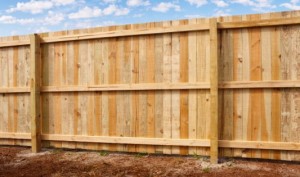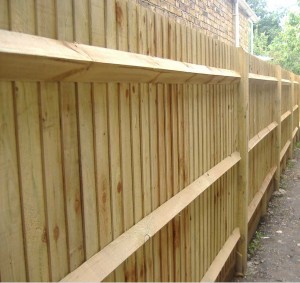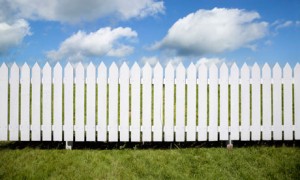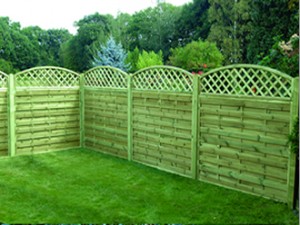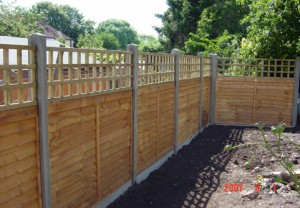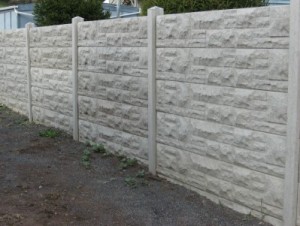Fence Types
All timber we use is fully treated to withstand rot for between 15 and 20 years (longer if fencing is treated every few years). For longer lasting fencing, concrete posts remove the risk of rot and are reinforced with steel rods for further strength. Additionally we provide concrete gravel boards which when used prevent the panels having contact with the ground removing the risk of premature rot entirely.
For locations that are more exposed to the elements – we supply panels designed to withstand stronger winds with gaps in the panels to allow the wind to pass through, however these panels are double sided so you don’t loose privacy.
Close Board Fencing
Close board fencing is sturdy enough to withstand strong winds due to its heavy duty framework. It is even more robust than Overlap fencing and provides privacy and security around the perimeter of a garden.
A benefit of this fencing (along with strength) is that you can fit any size gap, to any specific height (within legal restrictions) without wasting materials. There are also no loose parts with this fencing unlike some panel fences which gives additional security.
Overlap(featheredge) Fencing
Overlap or Lap fencing gives privacy and security. It is fairly similar to close board panel fencing as it is encased in a heavy duty framework, however it is constructed using feather edge boards instead.
A benefit of this fencing (along with strength) is that you can fit any size gap, to any specific height (within legal restrictions) without wasting materials. There are also no loose parts with this fencing unlike some panel fences which gives additional security.
Picket Fencing
Picket or Palisade fencing is a simple but effective solution for a front or back garden where a fence is not required to provide privacy. However it still offers security and clearly marks boundary lines.
Post and Rail Fencing
Post fencing is usually used to mark out boundaries within a field or in the front garden. It is a simple fence and therefore doesn’t have a particularly dramatic impact on a garden. This fencing is also used for paddocks and to keep small animals in or out of property with wire meshing attached. This type of fencing is also used temporary whilst growing hedges/shrubbery since it is cot effective and can be constructed without using concrete underground.
Panel Fencing
Panel fencing has a few benefits compared to other types, the panels come pre-made meaning the fencing goes up faster, they are a lot easier to replace should one get damaged, and if you should desire to alter the look of the property, a different style of panel can be used without replacing the posts. If concrete slotted posts are used then it is simply a matter of sliding the old one out and putting a new one in.
Closeboard fence panels are similar to lap panels, but with slats running vertically. Fence panels comes fully constructed and ready to use immediately.
Closeboard panels are strong panels at a reasonable price, easy to paint and should last 15-20 years if maintained.
Lap panels are made using slats that run horizontally, with vertical battens to hold them in place and give additional strength.
Lap panels are very common types of fencing and are often used in rear gardens. The initial capital cost is the lowest of all fence panels available, however life expectancy is less than fences such as closeboard. Lap panels are not suitable for exposed locations.
Garden Trellis
Trellis can be added to the top of fencing panels to create a higher fence without losing light into the garden. It can also be used in front of fencing or walls to allow for crawling/climbing plants. It adds a decorative feature to any fencing.
Concrete Fencing
Besides the high security and toughness of these fences, there are many other advantages including; Fire resistance, termite resistance, wind blockage and virtually no maintenance.
This type of fencing is also easier to erect and easy to repair than walls should damage occur.
